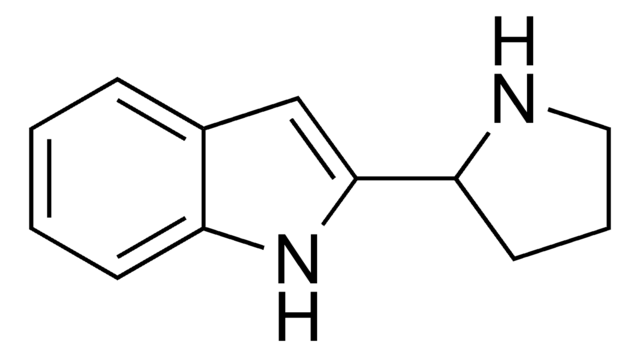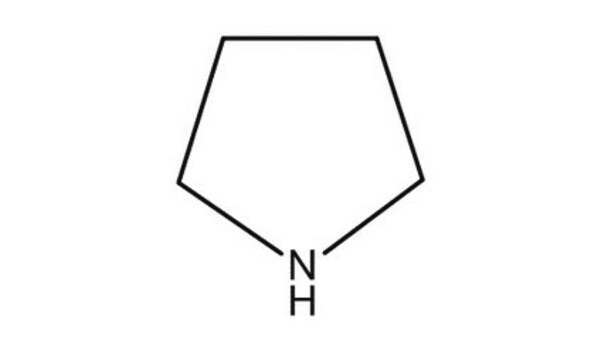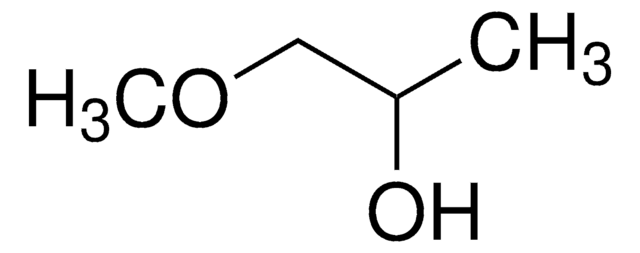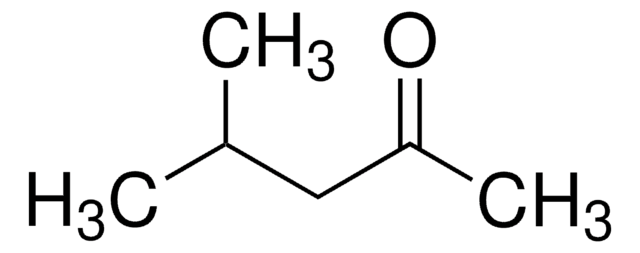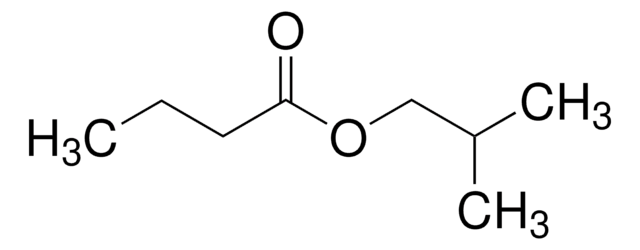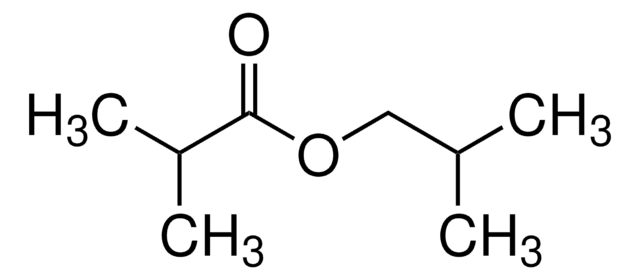8.18831
Diisobutyl ketone
for synthesis
Synonym(s):
Diisobutyl ketone, Di-iso-butyl ketone, 2,6-Dimethyl-4-heptanone, Isobutyl ketone
About This Item
Recommended Products
vapor pressure
1.6 hPa ( 20 °C)
Quality Level
form
liquid
autoignition temp.
345 °C
potency
5750 mg/kg LD50, oral (Rat)
16000 mg/kg LD50, skin (Rabbit)
expl. lim.
0.8-6.2 % (v/v)
bp
163-173 °C/1013 hPa
mp
-41 °C
transition temp
flash point 47 °C
solubility
0.5 g/L
density
0.81 g/cm3 at 20 °C
storage temp.
2-30°C
InChI
1S/C9H18O/c1-7(2)5-9(10)6-8(3)4/h7-8H,5-6H2,1-4H3
InChI key
PTTPXKJBFFKCEK-UHFFFAOYSA-N
Related Categories
Application
- Fast, selective, and sensitive analysis of low-abundance peptides in human plasma by electromembrane extraction.: This research demonstrates the application of diisobutyl ketone in electromembrane extraction techniques, significantly enhancing the selectivity and sensitivity of peptide analysis. This method holds potential for advancing proteomic studies and clinical diagnostics (Balchen M et al., 2012).
- Direct determination of bromine in plastics by electrothermal vaporization/inductively coupled plasma mass spectrometry using a tungsten boat furnace vaporizer and an exchangeable sample cuvette system.: Highlights the role of diisobutyl ketone in preparing plastic samples for bromine analysis, addressing significant challenges in environmental monitoring and recycling processes (Okamoto Y et al., 2010).
- Flow injection wetting-film extraction system for flame atomic absorption spectrometric determination of cadmium in environmental waters.: Discusses a novel method involving diisobutyl ketone for the extraction of cadmium from environmental waters, contributing to enhanced detection capabilities in pollution monitoring and water safety (Adam IS et al., 2009).
- [Thermal desorption gas chromatography for determination of diisobutyl ketone in air of working places].: This study uses diisobutyl ketone in a thermal desorption gas chromatography method to measure workplace air quality, essential for occupational health and safety regulations in industrial environments (Chen W et al., 2008).
- Synthesis of the O-(2,3,4,5,6-pentafluorobenzyl)hydroxylamine oximes of selected carbonyl compounds and their determination by liquid chromatography with ultraviolet detection.: Research on diisobutyl ketone involves its use in synthesizing chemical derivatives for improved UV detection in liquid chromatography, enhancing analytical accuracy in chemical and pharmaceutical analyses (Wiesenthal K et al., 2000).
Analysis Note
Density (d 20 °C/ 4 °C): 0.807 - 0.811
Identity (IR): passes test
Signal Word
Warning
Hazard Statements
Precautionary Statements
Hazard Classifications
Flam. Liq. 3 - STOT SE 3
Target Organs
Respiratory system
Storage Class Code
3 - Flammable liquids
WGK
WGK 1
Flash Point(F)
120.2 °F - closed cup
Flash Point(C)
49 °C - closed cup
Certificates of Analysis (COA)
Search for Certificates of Analysis (COA) by entering the products Lot/Batch Number. Lot and Batch Numbers can be found on a product’s label following the words ‘Lot’ or ‘Batch’.
Already Own This Product?
Find documentation for the products that you have recently purchased in the Document Library.
Our team of scientists has experience in all areas of research including Life Science, Material Science, Chemical Synthesis, Chromatography, Analytical and many others.
Contact Technical Service

